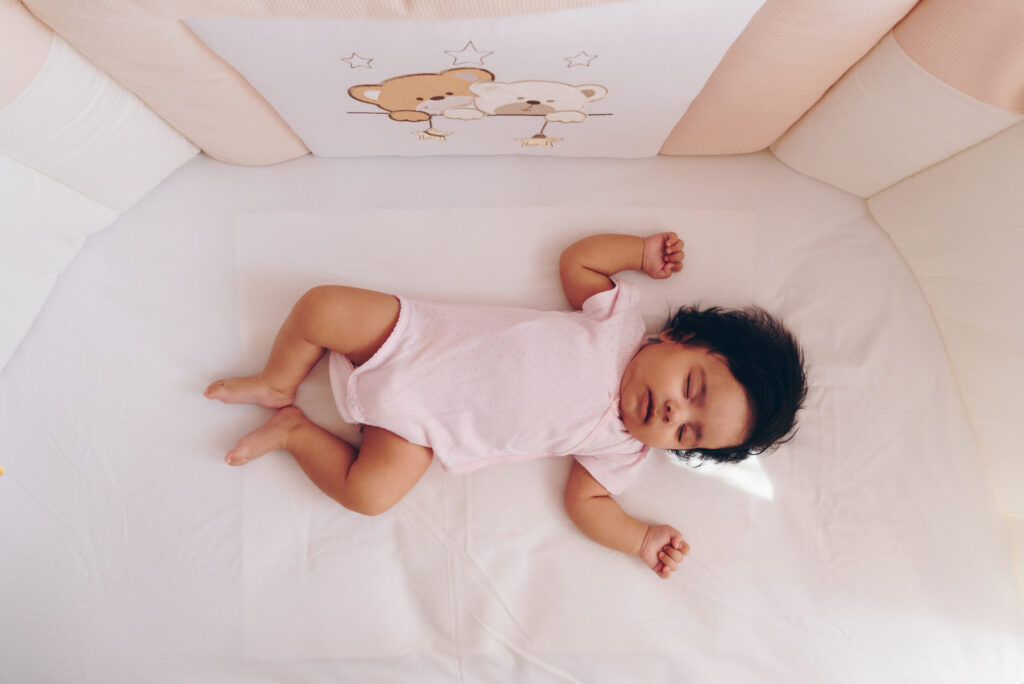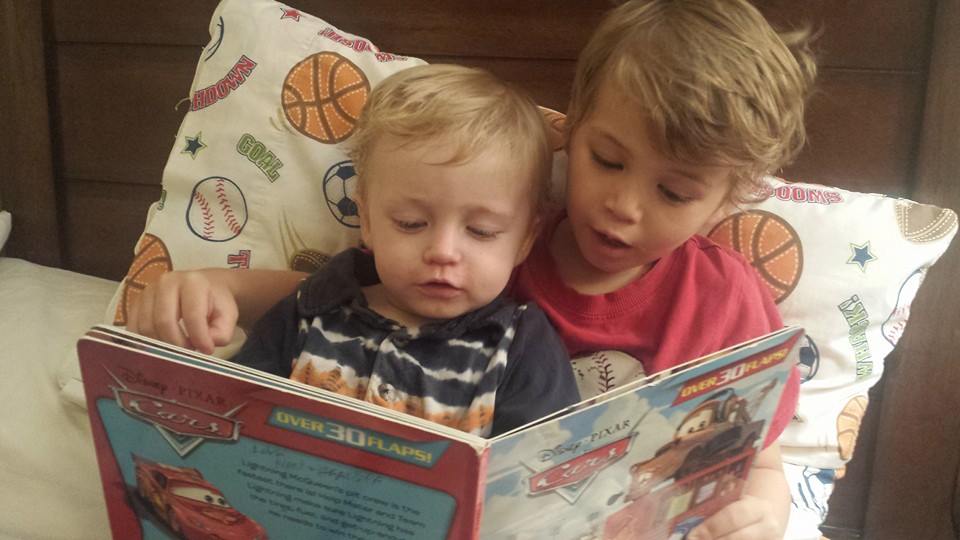A Guide To Sleep Training: Healthy Baby Sleep Habits
Apr 13, 2022
Are you worried that your baby isn’t sleeping through the night? If you are worried about healthy baby sleep habits, keep in mind most infants don’t sleep through the night. In fact, only 57% of babies 1-year old or younger stay asleep for eight hours straight each night.
If you are interested in baby sleep training methods and baby sleeping tips, this article can help create healthy baby sleep habits for your little one and help you get some much-needed rest for yourself. Our sleep training guide looks at baby sleep expectations and baby sleep training methods such as cry it out techniques, pick up and put down methods, and Ferber Sleep Training.
Sleep Training Guide For Healthy Baby Sleep Habits
Baby Sleep Expectations
One of the main reasons having a baby who doesn’t sleep through the night is such a big issue is because many parents don’t have realistic expectations of the sleep patterns of babies. Babies were designed to wake up often at night to feed and cuddle. Keep in mind, many adults wake during the night, too. If our expectations for babies were not so different from our babies’ expectations for themselves, much of this “problem” would likely disappear. Some baby sleep expectations to be aware of are:
- Most babies under six months of age still need feeding and help to settle in the night.
- As babies get older, they need less sleep. More of their sleep happens at night.
- Developments like crawling and separation anxiety can affect sleep for babies over six months.
- If you’re concerned about your baby’s sleep, speak with a child health professional.
What is Sleep Training?
Baby sleep training is the process of teaching your baby to fall asleep without help from you. That means putting your baby down for bed while they are drowsy and still awake. Baby sleep training can teach your little one to drift off to sleep without being rocked, swayed, cuddled, nursed, or shushed.
Sleep training can also teach babies how to fall back to sleep when they inevitably wake up in the night (since night waking is a normal part of the sleep cycle, even for adults).
While it may involve some tears (for you and your baby), baby sleep training isn’t harmful to babies, in fact, they can often learn to be super sleepers in just a few nights!
Ask yourself these questions:
- Does your baby need to be rocked to sleep by you?
- Does your baby wake up in the middle of the night demanding a breast, bottle, or cuddle before drifting back to sleep?
- Is your baby at least 4 months old?
If you answered “yes” to the questions above, it may be time to start sleep training your baby to establish healthy baby sleep habits and healthier sleep for you as well.
When to Start Baby Sleep Training
We recommend beginning baby sleep training when babies are 4 to 6 months old. This age range is when babies are old enough to physically make it for six to eight hours overnight without needing to eat but aren’t quite at the point where the comforting you provide has become a sleep association. There are multiple baby sleep training methods that we cover in this sleep training guide.

Baby Sleep Training Method and Techniques
Baby Sleep Training Methods
There’s no one way to sleep train your baby, but many parents find that one or a mix of the following baby sleep training methods works for them and their baby.
Cry It Out Sleep Training
Cry it out sleep training is a method of baby sleep training, also called the “extinction” method. It involves putting your baby to bed and letting them cry until they fall asleep without any comfort or help from you.
That means as long as you’ve ensured you’ve put your baby to bed with a full tummy and in a safe sleep environment, you won’t go back into their room until it’s time for them to get up the next morning, if they are in need of a diaper change, or until they need to eat next.
While it may seem harsh, cry it our techniques (CIO) are harder on you than on your little one. With consistency (that’s the key!), your baby should begin falling asleep on their own in as little as three to four nights.
Ferber Sleep Training
Not a fan of letting your baby cry without some degree of attention and comfort? Try Ferber sleep training, a method of baby sleep training that involves “graduated extinction” or “check-and-console,” which involves allowing your baby to cry for a set period of time before you check on them.
These timed intervals of crying get longer by a few minutes with each interval until your baby falls asleep.
Over several nights, you’ll gradually increase the length of these intervals, reducing your presence in your baby’s room to let your baby do more of the work of settling down. Pretty soon, there’s no need for these comfort check-ins because your baby has learned to self-soothe.
Chair Sleep Training
Another of the baby sleep training methods is the chair method, this technique may work better for older babies and might feel more comfortable to you (and your baby) than cry it out techniques or Ferber sleep training.
Sit in a chair next to your baby’s crib until they fall asleep, without picking them up. Move the chair farther away each night until you’re near the door and then out of the room. At that point, your baby should be able to fall asleep without you there. This method won’t work for babies who can’t put you out of mind until you’re out of sight, however.
While this technique may be the right fit for some families, know that it may lead to more tears for some babies. When your baby falls asleep with you in the room, they may be startled and possibly upset when they wake up to find you’re no longer there.
Bedtime Fading Sleep Training
Does your little one wail for extended periods of time before falling asleep? Their body might not be ready for sleep at your desired bedtime. The bedtime fading method can modify your baby’s circadian rhythm to get bedtime to where you want it to be. Here’s how:
- Pay attention to your baby’s sleep cues such as eye rubbing, yawning, turning away from lights or sound, and fussiness.
- Once your baby seems tired, put them to bed.
- Hopefully, they will fall asleep fast, but if your baby cries a lot, take them out of the crib for a set amount of time (roughly half an hour) and then try again.
- After a few nights of putting your baby down at that time, move bedtime 15 minutes earlier and repeat the process with this new bedtime.
- Gradually move bedtime earlier in 15-minute increments until you reach your desired bedtime.
Bedtime fading also sometimes describes any baby sleep training strategy that involves gradually decreasing a parent’s presence in the baby’s room when putting them down to sleep.
Pick Up and Put Down Method
The pick-up and put-down baby sleep training technique involves you going through your baby’s normal bedtime routine, then putting them down to bed drowsy but awake. When and if your baby cries, wait a few minutes to see if they settle themselves down on their own. If not, go in to pick up your baby and soothe them. When your baby is calm again, put them back down in the crib or bassinet.
Repeat this process until your baby falls asleep. Just be aware that this sleep training method can take a long time, and requires a good deal of patience.
Baby Sleeping Tips and Pediatricians in Wichita
Discuss Baby Sleeping Tips with Doctor or Pediatrician
Never hesitate to check in with your baby’s doctor or pediatrician if you want guidance on when and how to begin baby sleep training to create healthy baby sleeping habits. If you follow baby sleep training methods consistently and it’s still not working after two weeks, you may want to call your doctor for tips and advice.
And while it’s not usually a health concern if a baby spits up or throws up once or twice while crying it out, it can be upsetting and jarring for everyone involved. Plus, if it happens more than once, it could be a sign that your baby is sick or that this isn’t the right approach for your family. Talk to your pediatrician to see what’s going on.
Baby sleep training often involves tears for both you and your baby at first. But with time, consistency, and a bit of luck, you’ll soon be sleeping peacefully, and your little one will have learned the valuable life skill of how to fall and stay asleep all on their own.
If you are searching for pediatricians in Wichita, contact HealthCore Clinic. Our team-based, integrated care method means that we see your child’s medical needs head to toe—all systems of their body are connected, and so is our patient-centered approach!
HealthCore Clinic has all your prenatal care needs under one roof including medical, behavioral, ultrasounds, lab, pharmacy, and more. The HealthCore Clinic prenatal care team includes OB-GYN Care, Family Medicine providers, Wesley Family Medicine residents, and Certified Nurse-Midwives (CNM). We offer comprehensive checkups throughout your pregnancy to help keep you and your future baby healthy.
After your baby is born, HealthCore’s pediatric team is one of the best in Wichita! We conduct well-child visits, which are a time when parents can check up on their child’s health and make sure they’re growing and developing normally. Well-child visits usually start a few days after children are born and continue until they turn 18.
Your child will need wellness checkups at ages 2 weeks, 2 months, 4 months, 6 months, 9 months, 12 months, 15 months, 18 months, 2 years, 2 1/2 years, 3 years, and then annual visits after that. During these checkups, your health care provider will assess your child’s physical and emotional development, give guidance and immunizations (shots), and complete any needed tests. This is also a great time to talk with your health care provider about concerns or questions you have about your child’s development (physical, mental or social).
Learn more about HealthCore Clinic, our prenatal services, our pediatricians, and our family doctors — then schedule an appointment today!

A Note From the Author: Ryan Gates
Author’s Note on Baby Sleep Training
When my wife and I became new parents we were so excited! We brought our son home in January of 2011…and then it seemed like we would never sleep again. He was a cluster feeder who would feed for 15-20 minutes, then sleep for 30-45 minutes, then wake and cry until fed for 15-20 minutes…over, and over, and over, and over again. We had intended for our son to be entirely breastfed, but it became clear after a short period of time that wasn’t going to work because my wife was up all night! So we took turns so at least one of us could get a good chunk of sleep every other night. He did better on nights with Mom than he did with me, because a bottle is a bottle and a breast is a breast. I found great success with taking my shirt off and laying him on my chest while bottle-feeding him to get some father-son skin-to-skin time. Gradually, he slept longer between feedings until we had a sleep schedule that sort of worked for everyone…but we were like zombies by day. At 5 months we knew it was time to start sleep training so everyone could have better sleep habits.
We ended up doing a hybrid of the Ferber sleep training method, and it was amazing how well it worked. I say “hybrid” because we incorporated some of the other methods in our weaning process.
The first night, we did our nighttime routine which consisted of a bath, pajamas, feeding, reading, and singing. Our little guy could never make it through the second verse of “Blue Shadows” from The Three Amigos. We then placed him in his crib right as he started to doze off — we wanted him to not only soothe himself in the middle of the night but to learn to go to sleep on his own as well. As soon as we did this his eyes shot open, he climbed up to a standing position (early walker!), clung to the side of the crib, and cried. We picked him up, sat back in the chair next to his crib, soothed him until he relaxed, and then put him right back in the crib. Tears again. We picked him up again, soothed him, then placed him back in the crib. More tears. This time, we stood next to his crib and soothed him with words, kisses, back rubs, etc. Everything we’d do if we were holding him, only now letting him stay in the crib and not picking him up.
He cried for over an hour. I thought for sure the neighbors were going to call child protective services! I thought I might lose every hair on my head. But, right as I felt I couldn’t handle it any longer…his cries started to die down. He was exhausted. He sat down. We wiped away his tears. He laid down. We rubbed his back. He found his 2 middle fingers and began sucking them. And then…poof…he was asleep!
He woke up 3-4 times that night, and each time we took turns going into this room, standing or sitting by his bed, talking to him, rubbing his back, and soothing him without picking him up. Each time, he stayed up for a shorter period of time and each time ended with him sucking his fingers and falling asleep.
The next night, we repeated the process, but this time we stood close to the crib but “out of reach.” The first session was like the night before. He WAILED for almost an hour, then tuckered himself out, sucked his fingers, and went to sleep. Throughout the night when he cried, we would take turns going in, standing by the crib, but not touching him or picking him up.
I’m pretty sure my wife and I cried more than he did that night. Human beings are programmed as parents to want to soothe a baby when it cries. It killed me to not touch him that night! However, each time he woke up his cries were shorter and less loud. He just wanted to make sure we were there. We came to him each time. He got it. He slept. He only woke up 2-3 times that night.
The third night was the same process, but now we did it from the doorway to his room. “I’m here buddy.” Cries. “I know. You’re okay. Go back to bed sweetie.” Floomp! he went back to bed!!! He only woke up 2-3 times but the best part was when he was awake it was for much shorter periods of time…no hour-long wailing.
The fourth night we soothed him from the hall where he could hear us but not see us. It was very similar in the frequency of waking and length of cries as the night before.
On the fifth night, he woke up and cried around 1 AM. Just one long wail, a “Hey! Are you there?” I didn’t get out of bed, I just calmly shouted, “We’re right here…go back to bed sweetheart.” And he did. He woke a few other times, but he didn’t cry during these waking times and would eventually suck his fingers, soothe himself, and go back to bed.
From no sleep for anyone to everyone getting sleep in 4-5 nights! It was a game-changer!
My second son was tougher…but we were more patient. It took roughly a week and then things normalized, in fact, his older brother (now 2-years old) joined in the process and helped soothe his little brother.
They are now 9 and 11 years old. They are both brilliant young boys who are at the top of their class and each night they brush their own teeth, comb their hair, change into pajamas, crawl into bed, and read books for 20-30 minutes before I come to check in on them. They are great sleepers, self-soothers, problem-solvers, independent, and awesome dudes. They do not have less affection because we did sleep training, in fact, I’d say they might be the most affectionate guys on the planet.
Baby sleep training is hardest on the parents, not the baby. After we did sleep training, it was like learning to thrive after only trying to survive. I felt like I got to know my sons better because we were all rested and had better quality time together in the daytime. I was so worried that it would make them detached from me, but in the end, it actually brought us all closer together.

Ryan Gates is an award-winning author about parenting, a former board member of HealthCore Clinic, and a content contributor to our website’s “News” section.